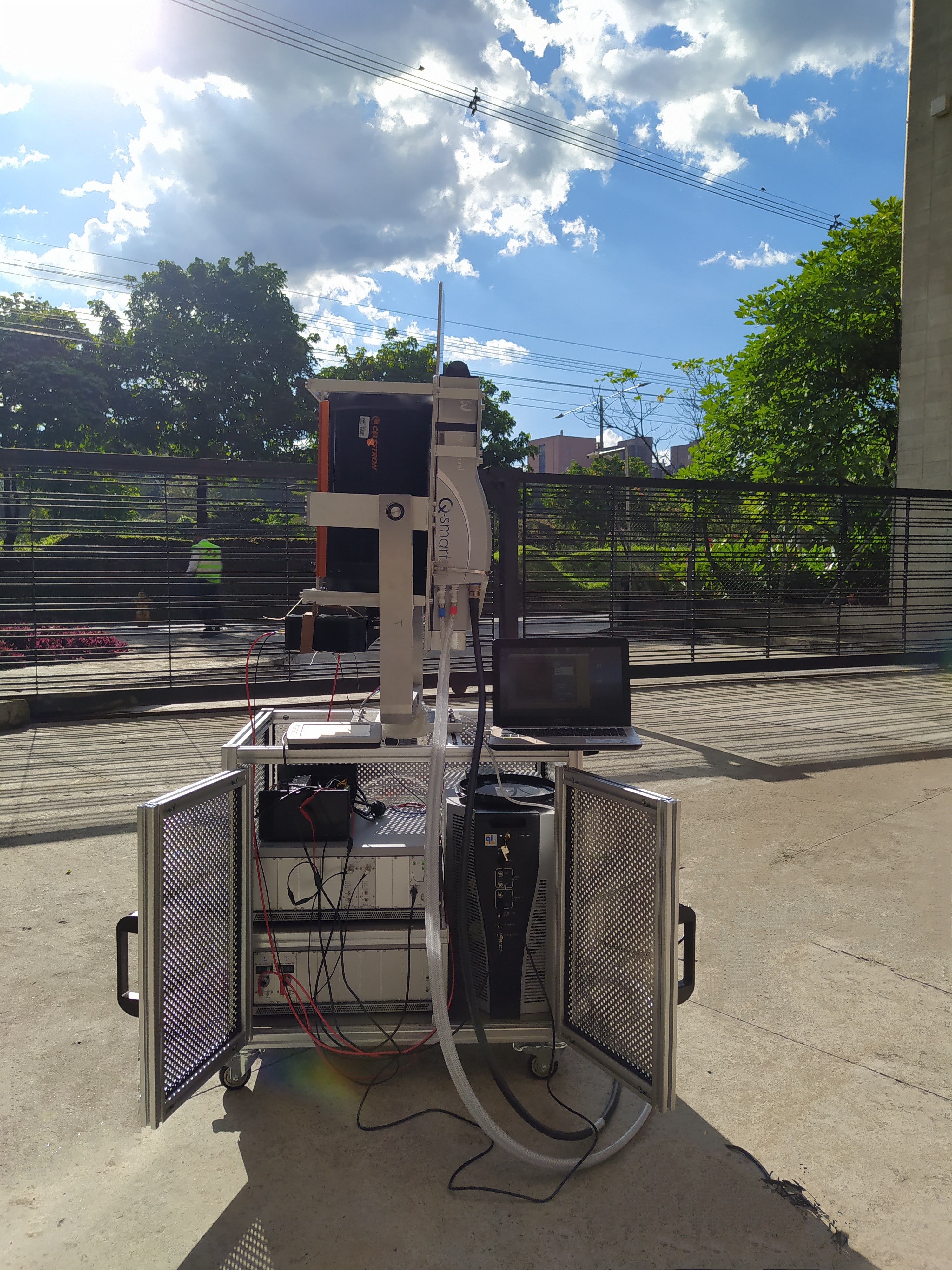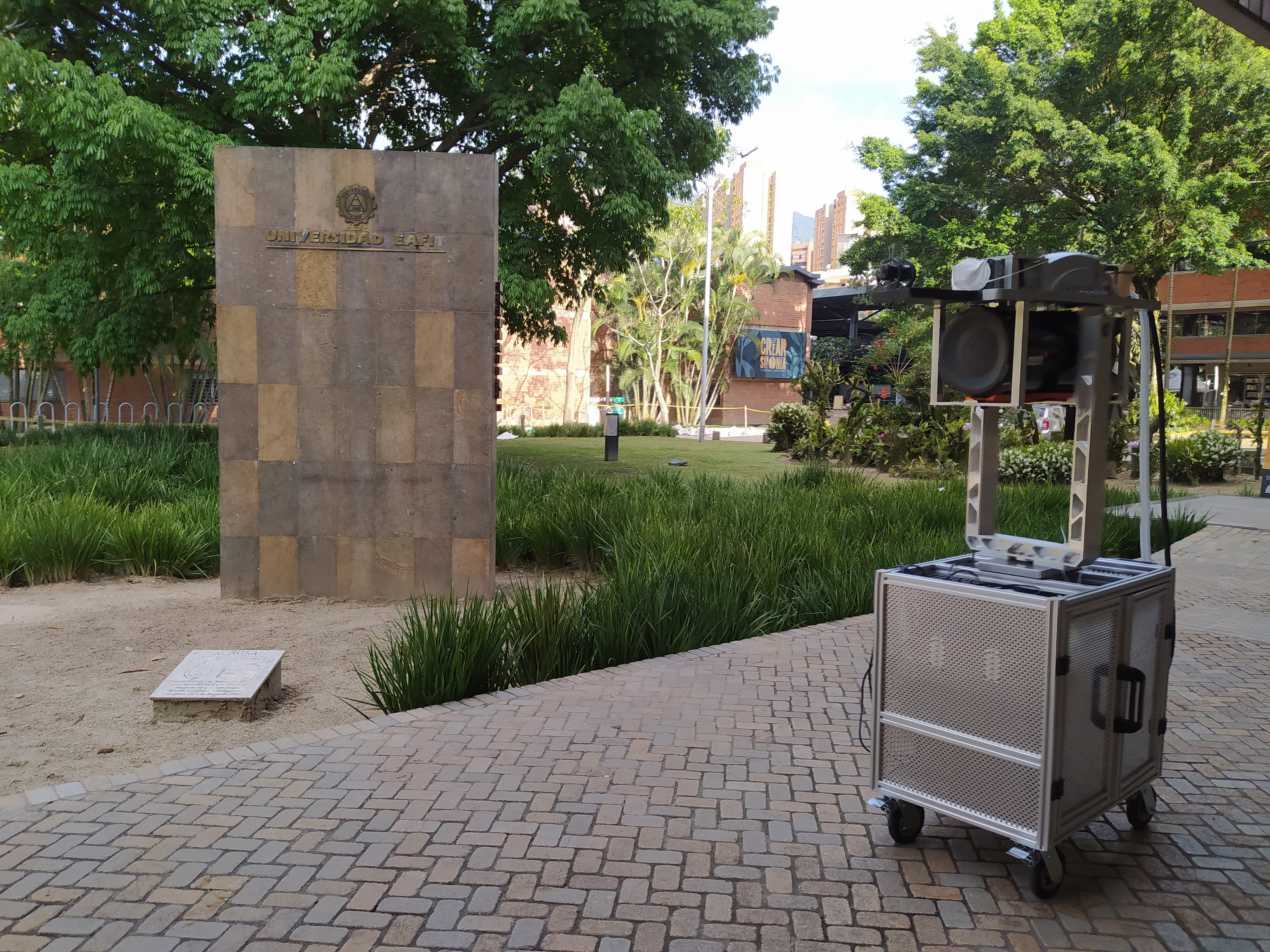The Scanning Elastic + Depolarization Lidar was completely designed, developed, and implemented in the framework of the projects 4DAir-MISDAM “Estudio 3D +1 de polución atmosférica: Mediciones In situ, en Superficie, de Detección remotA y Modelación atmosférica” (Universidad EAFIT, code 954-000003) and 4DAir-MOLIS “Estimación de la polución urbana mediante el uso de mediciones y asimilación de datos en superficie, in situ y de detección remota” (Minciencias, code 1150-852-71525).
The system began operation in April 2022. It uses a Quantel Q-smart-450 Nd:YAG laser at 532 nm, with 200 mJ per pulse and 20 Hz repetition rate. The laser beam is expanded 7X, and final laser divergence is 0.07 mrad. The system uses a bi-axial optical configuration with a 225 mm separation between the optical axes of the telescope and laser. The collector system is an f/10 Schmidt-Cassegrain telescope with a 234.95 mm aperture and an 85 mm secondary mirror. No optical fiber is used; the collected light goes directly to the optical detection system. This system was designed as optomechanical boxes, the first one has a Semrock dichroic mirror NFD01-532-25x36 to split 355 nm from 532nm, and the second box has a variable diaphragm located at the focal plane of a f20 plano-convex lens to collimate the light collected by the telescope, it gives a field of view of 0,7 mrad and a full overlap at 75 m that could be adjusted and finally, an interferometric laser-line filter with a bandwidth of 2 nm. For calibration measurements, a linear polarizer to apply the D90 calibration method is added. The last box has the polarizing beam splitter to divide the parallel and perpendicular polarization components of the incident radiation toward Hamamatsu photomultiplier tubes. Data is acquired using a Licel TR40-16Bit-3 transient recorder of 16-bit, 40 MHz A/D converter with an 800 MHz fast photon counting system. Since the sampling rate of each channel is 40 MHz, the spatial resolution of the lidar is 3.75 m.
The lidar system can take horizontal (azimuth), vertical (zenith), and volumetric scans of the atmosphere with the elevation and azimuth stepper motors (NEMA 23, 2.8 A, 18 kg-cm) and gearboxes (1:80 for elevation and 1:30 for azimuth movement) for the preset scanning speed and range. To achieve a complete atmospheric mapping, we have 360° azimuth and 90° zenith scanning with a resolution of 0.82° (zenith) and 0.35° (azimuth). The scanning mechanism is made up of a U-shaped solid aluminum gimbal that rests on the horizontal rotation system. The height of the gimbal was designed so that the optical subsystem, which is attached to the telescope, can rotate freely. To move the system a containing structure whose structural elements are 35x35 aluminum profiles was designed with a total weight of 350 kg. It has pierced aluminum side guards to allow ventilation, doors with handles, and two handles to easily move the structure; to reduce vibrations when scrolling, 6" pneumatic wheels with brakes are used. Inside the structure, all components were placed (laser power source, PMTs power supply, transient recorder, the electronic box of the scanning system, and Lidar transmitter, receiver, and optical detection systems).

